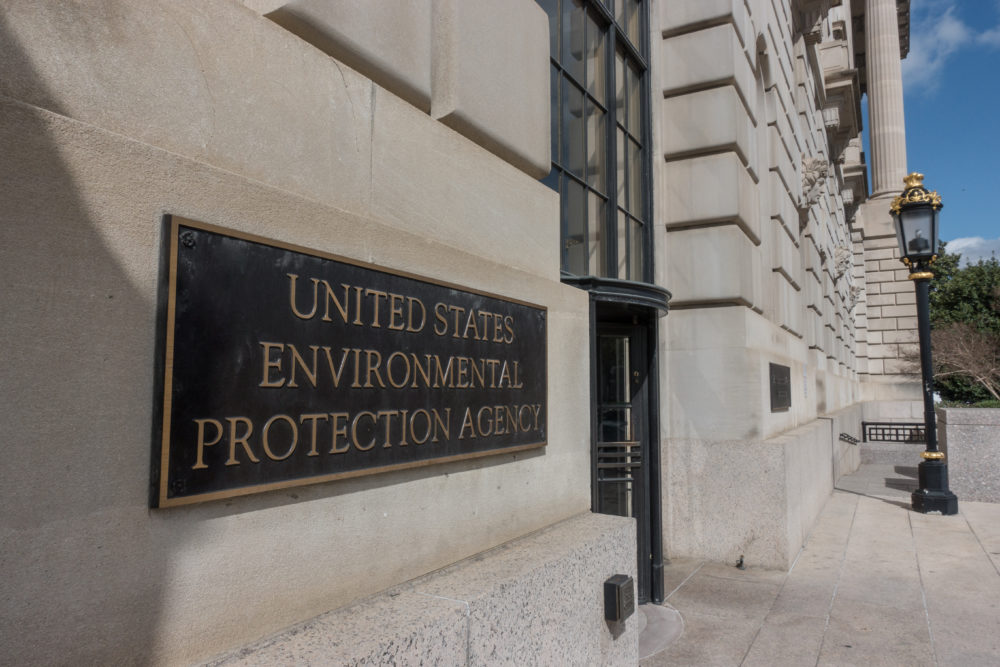Formaldehyde Exposure Linked To Leukemia and Head and Neck Tumors: EPA
EPA report could lead to new restrictions that are intended to prevent formaldehyde exposure and side effects for workers

According to a new report issued by federal environmental regulators, formaldehyde exposure from the use of industrial products may put individuals at higher risk of developing rare forms of cancer.
The U.S. Environmental Protection Agency (EPA) released the IRIS Toxicological Review of Formaldehyde-Inhalation assessment on April 14, indicating that industrial formaldehyde exposure may cause rare but serious head and neck tumors, leukemia and other adverse health effects.
Formaldehyde is a chemical used to make many building materials, paper products and cosmetics. However, exposure to formaldehyde has been linked to an increased risk of several types of cancers and other adverse health effects. As a result, the U.S. Occupational Safety and Health Administration (OSHA) limits occupational formaldehyde exposure in the work place to 0.75 ppm on average over an 8 hour workday, or 2 ppm not exceeding a 15 minute span of time.
Formaldehyde Risks For Workers
For the first time since 2010, the EPA assessment of formaldehyde describes the chemical as carcinogenic, indicating that long term exposure to even low levels of formaldehyde may cause nasopharyngeal cancer, sinonasal cancer and myeloid leukemia, which impacts bone marrow and blood cells. The assessment further warns formaldehyde exposure may also increase the risk of allergies, asthma and decreased pulmonary function, as well as cause pregnancy complications.
The EPA raises concerns that formaldehyde is still approved and consistently used in plywood adhesives, abrasive materials, insulation, pesticides, and embalming fluids. The assessment further stated “Major sources of anthropogenic emissions include household furnishings and building materials, motor vehicle exhaust, manufacturing plants that produce or use formaldehyde or substances that contain it (e.g., glues), and tobacco smoke.”

Did You Know?
Change Healthcare Data Breach Impacts Millions of Customers
A massive Change Healthcare data breach exposed the names, social security numbers, medical and personal information of potentially 100 million Americans, which have now been released on the dark web. Lawsuits are being pursued to obtain financial compensation.
Learn MoreThe EPA states the research outlined in its assessment “provides the scientific support and rationale for the hazard and dose-response assessment of inhalation exposure to formaldehyde.”
The findings will be available for a 60-day public comment period before undergoing review by the National Academies of Sciences, Engineering and Medicine (NASEM) for an independent, scientific review. If approved by NASEM, the EPA will be able to set forth rules on the use of formaldehyde in commerce, setting air emissions limits and other regulations that decrease exposure to the chemical.
Concerns About Exposure to Formaldehyde
In the early 1980’s, the EPA was notified by scientists performing independent studies that linked the exposure of formaldehyde to nasal cancer in lab rats. After analyzing the studies the EPA had classified formaldehyde as a probable human carcinogen under prolonger or extended periods of exposure.
By 2011, the International Agency for Research on Cancer (IARC) had classified formaldehyde as a human carcinogen, and the National Toxicology Program of the Department of Health and Human Services (DHHS) named formaldehyde as a known and definite carcinogen to humans possible to cause cancer.
Currently, the Occupational Safety and Health Administration is able to issue citations to salons where the formaldehyde levels in the air exceed permissible limits. However, after years of complaints involving severe irritation reported from workers in the cosmetic industry, the U.S. Food and Drug Administration has yet to generate further regulation or restrict the use of formaldehyde from the products themselves.
Overexposure to formaldehyde can be harmful to humans, with short term symptoms known to cause irritation of the eyes, nose, throat and sinuses. Other acute exposures to formaldehyde have been known to cause burning, itching, dryness and redness of the eyes, nasal dryness, soreness, sore throat, wheezing, and shortness of breath, chest pains and even bronchitis.
In recent years, several high profile formaldehyde cancer lawsuits have been filed against cosmetics companies, including Johnson & Johnson Baby Shampoo lawsuits and Unilever Suave shampoos and conditioners lawsuits, all raising allegations that consumers have been unknowingly exposed to formaldehyde.
Formaldehyde in Hair Relaxer Risks
Hair relaxer cancer risks have been raised in multiple peer reviewed medical journals in recent years, warning women that hair relaxers contain levels of formaldehyde, phthalates and thousands of potentially harmful chemicals. Prior research on several of the chemicals identified in hair relaxers have well established links to hormone-related cancers including breast cancer, ovarian cancer and other side effects.
Formaldehyde cancer risks from hair relaxers were raised in a study published in the medical journal Carcinogenesis in 2017, which identified a relationship between use of hair relaxer and breast cancer among African American women.
Researchers stated the use of chemical relaxers containing formaldehyde and other chemicals increased the risk of breast cancer by 74% among white women.
In 2019, data collected from the U.S. Department of Health and Human Services “Sister Study”, which involved an examination of the breast cancer risk among 50,000 participants, indicates women who use hair relaxing products face a significantly increased risk of developing breast cancer.
Specifically, the study found that hair relaxers increased the risk of breast cancer by 30%. The findings were published in the International Journal of Cancer (IJC).





0 Comments